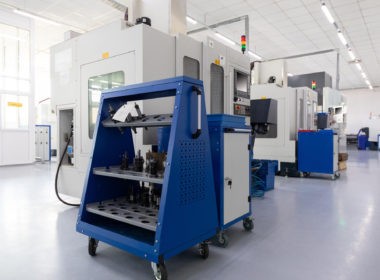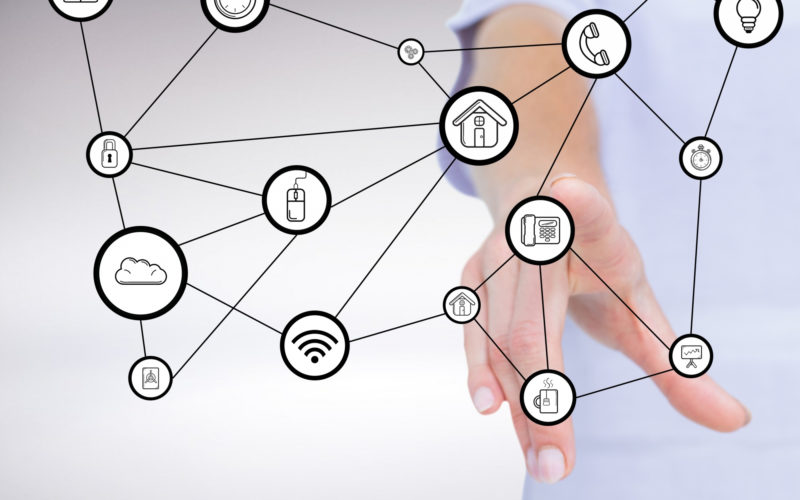The Internet of Things (IoT) is a fantastic technological leap. It allows devices to gather data and work smarter, making lives easier in so many ways. On the other hand, business continuity planning is a game plan companies create to keep running smoothly no matter what happens. Access to the IoT is revolutionizing business continuity in remarkable ways.
It helps businesses become agile in developing proactive growth strategies. Additionally, the IoT empowers companies to detect issues early, respond quicker and make smarter decisions, making them capable of facing any challenges that come their way.
1. Real-Time Monitoring
Real-time data collection is one of the shining stars of IoT technology. It means IoT-enabled devices constantly gather information and send it to a central system. This continuous data flow gives businesses an up-to-the-minute view of how their systems and machinery are performing.
This real-time data helps companies foresee issues before they become significant problems. For instance, if a machine in a factory starts showing irregular readings, predictive algorithms can identify that it’s headed for a malfunction.
The IoT allows businesses to avoid unexpected halts in operations and perform maintenance during scheduled downtimes. It keeps a close eye on their operations and makes predictive maintenance more accurate and timely.
2. Automation for Quicker Responses
Automation through IoT is like having a super-smart assistant that never sleeps. These devices can communicate with each other and make decisions based on the data they collect.
It goes beyond simply gathering information — these appliances can take action. For example, if an IoT-enabled thermostat detects a temperature drop, it can automatically adjust the heating without human intervention.
In addition, when businesses automate processes, the risk of mistakes due to fatigue or oversight drops dramatically. Also, machines can react to data much faster than a person flipping through spreadsheets can. This speed is vital when every second counts, such as quickly shutting down malfunctioning equipment to prevent further damage.
3. Enhanced Communication
IoT-enabled communication tools are influential in the realm of business continuity. These are smart devices that can send, receive and interpret data. They include smart sensors, connected wearables and specialized apps allowing real-time data sharing. Imagine a network where machines talk to each other, sending crucial updates that help businesses adapt during crises.
When it comes to improving crisis management, these tools are a game-changer. Say there’s a natural disaster like a flood. Smart sensors can monitor water levels and send immediate alerts to mobile devices. This rapid communication enables quick evacuation or countermeasures, reducing risks and potential damages.
Challenges of the IoT in Business Continuity
While the IoT brings numerous advantages to business continuity, it has challenges. As it transforms the business landscape, companies must be aware of these points to harness its potential while minimizing risks.
1. Security Risks
One of the significant challenges with the IoT is the issue of security flaws. With over 50 billion connected devices used around the world, there are bound to be issues. These can be loopholes in the software, poor device authentication or even a lack of regular security updates. Security vulnerabilities can expose businesses to unauthorized access or even cyberattacks.
An unauthorized person gaining control over IoT devices can wreak havoc. They could manipulate data, halt operations or even compromise sensitive information. This activity would disrupt day-to-day operations, and lead to a loss of customer trust and financial damage.
2. Data Overload
The IoT is a data powerhouse, processing massive amounts of information every second. Data from DevPro Journal estimates that by 2025, the IoT will generate a staggering 80 zettabytes of data.
But here’s the catch — this large volume of data can be a double-edged sword for businesses. While having access to heaps of information can be beneficial, it can also slow down decision making. Sorting through this mountain of data to extract valuable insights can be time consuming during urgent situations requiring quick actions.
3. Complexity in Management
Like any technological innovation, the IoT involves a complex network of interconnected devices, from sensors to cloud servers. This network complexity can directly impact business operations and supply chains.
The more devices companies have in their networks, the more points of failure they introduce. If one device malfunctions, it can trigger a cascade effect, affecting other connected devices and systems. This interconnectedness makes pinpointing issues and applying quick fixes during a crisis harder.
Balancing the Pros and Cons
The Internet of Things can revolutionize business continuity planning but comes with challenges. The good news is organizations can balance the advantages and drawbacks. Here are practical strategies for achieving this equilibrium.
1. Security Measures
Enhancing IoT security is pivotal for business continuity. One of the primary measures is a thorough risk assessment to identify potential vulnerabilities. After identifying the weak spots, companies can apply robust encryption methods and multi-factor authentication for better device security.
But the work doesn’t stop there. Organizations can’t overlook the importance of continuous updates. Regular software updates patch existing vulnerabilities and add extra layers of security. In a rapidly evolving digital environment, staying up to date is not just advisable — it’s essential.
2. Data Management
Managing data overload is a big deal, especially with the IoT’s massive volumes. One effective solution is data segmentation, where businesses can categorize and store data based on its relevance and priority.
Artificial intelligence (AI) is vital in this process. Algorithms can quickly sort through heaps of data and pick out the most essential pieces. By automating this data sorting, AI frees up valuable time and ensures only the most relevant data gets attention.
3. Simplifying IoT Systems
Simplifying IoT networks is critical to making them more manageable and efficient. One approach is to minimize the types of devices and protocols within the network. Using standardized devices and protocols can make it easier to manage.
Centralized IoT platforms act as a control center for all your IoT devices. They allow you to monitor, manage and secure your entire network from one place. With a unified dashboard, companies can gain better visibility into their operations, making identifying and resolving issues easier.
The Road Ahead
The key to success is weighing both sides carefully. Businesses can tip the scales in their favor by adopting robust security measures, managing data wisely and simplifying their IoT networks. Take a balanced view when integrating IoT into business continuity plans. Embrace the benefits, plan for the challenges, and pave the way for a resilient future.












